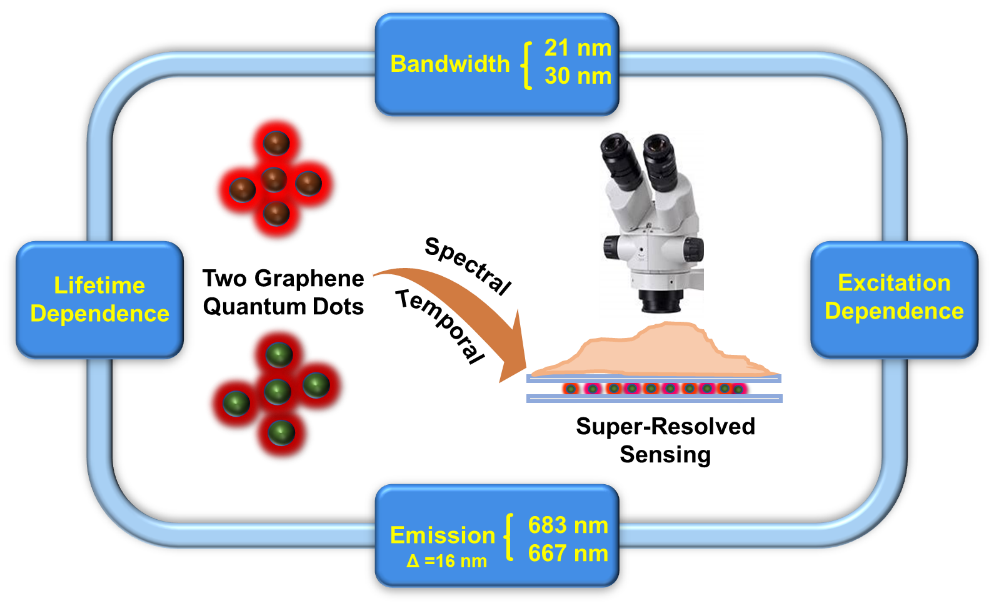Carbon dots have been applied as new type of luminescent carbon nanomaterials in recent years. However, compared with the narrow-band luminescence of rare earth materials (5~15nm) and quantum dot materials (15~30nm), almost all carbon dots reported so far have an emission half-width more than 40-60nm, although ultra-narrowband is the most important feature of luminescent material.
Since 2016, a research group led by Prof. XIE Zheng from the Technical Institute of Physics and Chemistry, CAS has systematically proposed a new method in preparation of carbon dots with narrow band (Phys. Chem. Chem. Phys. 2016, 25002;Part. Part. Syst. Char. 2016, 811; ACS Appl. Mater. Interfaces, 2018, 16005; J. Mater. Chem. C, 2018, 5957; Nanoscale, 2019, 11577, etc.).
Recently, two types of narrow-bandwidth red emission Graphene Quantum Dots (GQDs) had been successfully prepared by Prof. XIE’s team and related work was published in NPG Asia Materials.
In the research, GQDs are prepared by a one-step method with planar conjugated macrocyclic phthalocyanine compounds as the carbon sources. The full width at half maximum of the two GQDs (respectively 21nm and 30nm) have reached the range of ultra-narrow bandwidth emission in luminescent materials.
In addition to ultra-narrowband emission, GQDs also have the characteristics of red emission wavelength, close emission peak position (16nm), partial dependence on excitation wavelength and fluorescence lifetime. Based on the above characteristics, Prof. Zeev Zalevsky, Dean of the Faculty of Engineering, from Bar-Ilan University and Prof. XIE’s team have proposed a super-resolution sensing strategy. By using the new sensing strategy, scientist can extract spectral information without using a spectrometer.
“Besides, with the help of these “tiny dots”, we can use the super-resolution technology to break the optical diffraction limit and fill the gap between the electron microscope (~1nm) and the ordinary visible optical microscope (200-250nm). We can observe finer structures or higher-resolution images,” said Prof. XIE.
This work has applied for Chinese invention patent and was supported by the National Natural Science Foundation of China, and the CAS President’s International Fellowship Initiative.

Figure. Schematic diagram of the luminescence characteristics and application in super-resolution imaging of two ultra-narrow-band red emission GQDs (Image by WANG Zhen)
NEWS